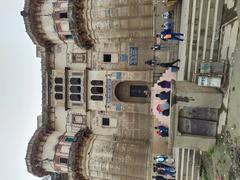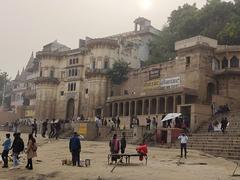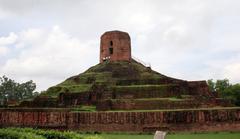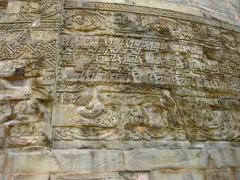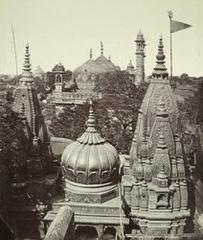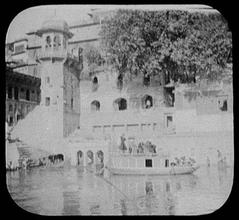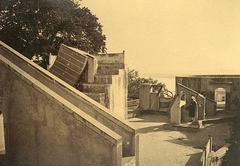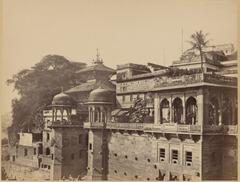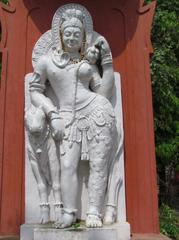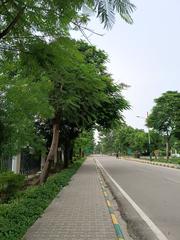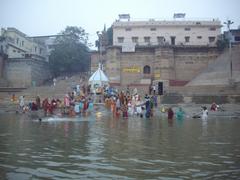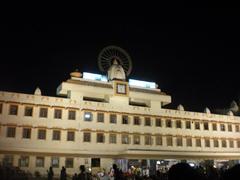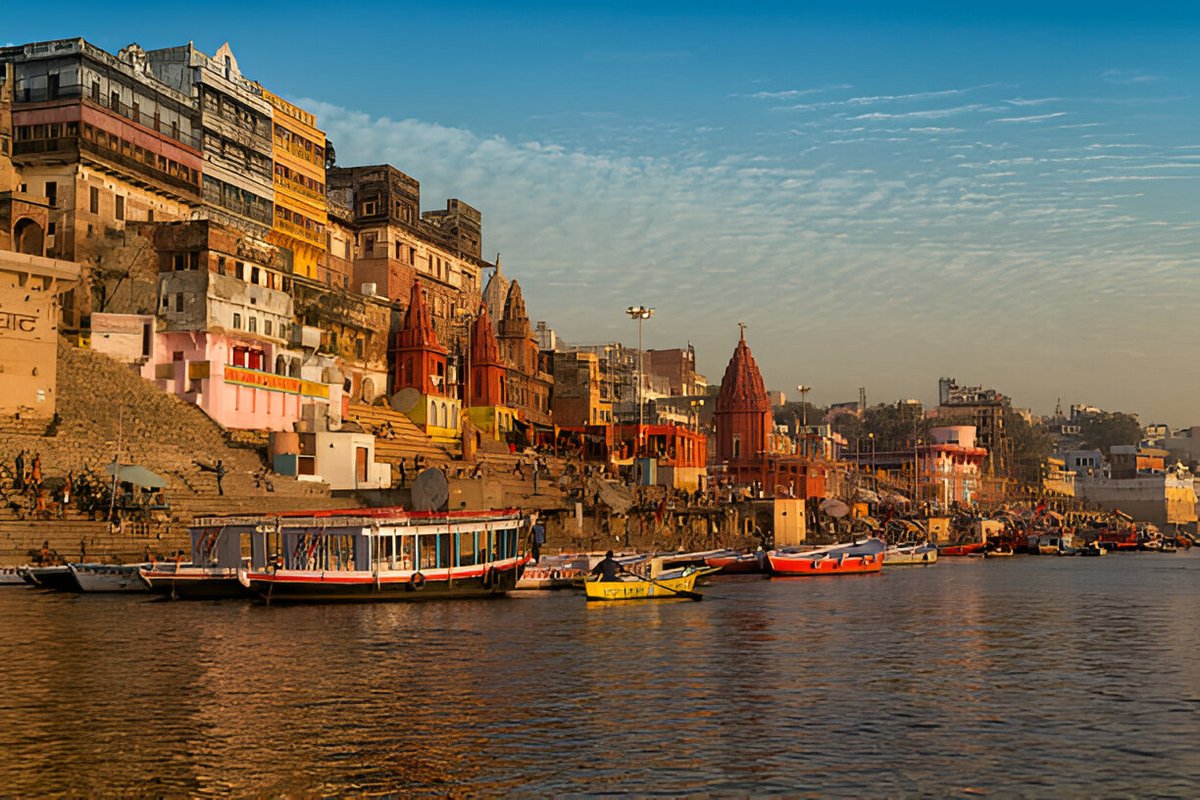
Varanasi Ghats Visiting Hours, Tickets, and Travel Guide
Date: 14/06/2025
Introduction
Varanasi, also known as Kashi or Banaras, stands as an ancient city along the banks of the Ganges River and is revered as one of the oldest continually inhabited cities in the world. At the heart of Varanasi’s spiritual and cultural life are its more than 80 ghats—stepped embankments that serve as both a stage for daily rituals and a testament to millennia of layered history. These ghats are not only architectural marvels but also living spaces where mythology, devotion, and vibrant local culture meet, making them essential for understanding the soul of Varanasi (historified.in; banarasdiary.com).
This guide provides a comprehensive overview of the ghats’ historical background, cultural significance, practical visiting information, and the challenges they face today. It is designed to help travelers, pilgrims, and culture enthusiasts experience the ghats respectfully and meaningfully.
Historical and Cultural Context
Ancient Origins and Mythological Foundations
The origins of Varanasi’s ghats date back over three millennia, with references in the Rigveda that underscore their spiritual importance (historified.in). These riverfront steps were originally developed as access points for ritual bathing, a practice deeply embedded in Hindu belief as a means to purify the soul. Mythology is entwined with the landscape—Assi Ghat, for example, is believed to be where Lord Shiva released water after slaying a demon, marking it as a site of divine power (banarasdiary.com).
Medieval to Modern Development
In the 18th century, the Maratha Empire and influential dynasties such as the Shindes and Holkars sponsored the renovation and expansion of many ghats, blending Hindu and Mughal architectural styles (savaari.com; cultureandheritage.org). The colonial era saw administrative regulations but did not diminish the ghats’ role as centers of ritual and community (varanasipedia.com). Since India’s independence, the ghats have been recognized as national heritage sites, with efforts made to balance preservation and modernization (visitindia.co).
Types and Functions of Ghats
1. Bathing and Ritual Ghats
These ghats, such as Dashashwamedh and Assi, are sites for morning ablutions, prayers, yoga, and the renowned Ganga Aarti ceremony (visitindia.co).
2. Cremation (Burning) Ghats
Sacred cremation ghats like Manikarnika and Harishchandra operate 24/7 and are believed to grant moksha (liberation) to those cremated here (laurewanders.com).
3. Private and Palace Ghats
Constructed by royal patrons, these ghats often feature distinctive architecture and private temples, providing quieter retreats (savaari.com).
Key Rituals, Ceremonies, and Festivals
Daily Rituals
At dawn, the ghats come alive with spiritual practices—bathing in the river, offering prayers, lighting oil lamps, and practicing yoga and meditation (toehold.in; thewanderingstar.com). Assi Ghat is especially popular for yoga sessions and morning rituals (yourtravelthings.com).
Cremation Ceremonies
Manikarnika and Harishchandra Ghats are the principal sites for cremation, a rite regarded as the final step to liberation in Hindu belief (dharmikvibes.com). Visitors may observe these rituals respectfully but should refrain from photography.
Ganga Aarti
The evening Ganga Aarti at Dashashwamedh Ghat is a must-see, featuring elaborate rituals with fire, chanting, and music (yourtravelthings.com). Arrive early for the best views and maintain decorum during the ceremony.
Major Festivals
- Dev Deepawali: Ghats are illuminated with thousands of diyas, celebrating the descent of the gods (traveltriangle.com).
- Ganga Mahotsav: A five-day festival featuring music, dance, and crafts.
- Mahashivratri: Devotees gather for processions and special prayers (traveltriangle.com).
- Ganga Dussehra: Marks the descent of the Ganges, celebrated with mass bathing (travelandleisureasia.com).
- Panch Kosi Parikrama: A 75-kilometer pilgrimage circuit beginning and ending at Manikarnika Ghat.
Visiting Information: Hours, Tickets, and Accessibility
Visiting Hours
Most ghats are open 24 hours a day, with key rituals at sunrise and sunset. Ganga Aarti at Dashashwamedh Ghat begins around 6:30 PM; morning Aarti at Assi Ghat is at sunrise (visitindia.co).
Tickets and Entry Fees
- Ghats: Free entry.
- Boat Rides: INR 300–1500, depending on duration and type.
- Temples: Generally free, but special darshan or tours may have nominal fees.
- Guided Tours: Available for deeper insight; book through reputable operators.
Accessibility
Some ghats, like Assi, have ramps, but most feature uneven and sometimes slippery steps. Plan accordingly if you have mobility challenges, and consider guided support.
Nearby Attractions
- Kashi Vishwanath Temple: One of the most sacred Hindu temples.
- Ramnagar Fort: A riverside fort and museum.
- Banaras Hindu University: Notable for its campus and cultural events.
- Local Bazaars: Explore for Banarasi silk and street food.
Best Ghats to Visit
- Dashashwamedh Ghat: Famous for Ganga Aarti, vibrant atmosphere, near Kashi Vishwanath Temple.
- Assi Ghat: Yoga sessions, morning Aarti, and cultural events.
- Manikarnika Ghat: Continuous cremation rituals; observe respectfully.
- Harishchandra Ghat: Another important cremation site.
- Scindia Ghat: Known for its submerged Shiva temple.
- Kedar, Tulsi, Lalita, and Jain Ghats: Each with unique historical, architectural, or religious significance.
Practical Tips for Visiting
- Dress Modestly: Cover shoulders and knees, especially during rituals or temple visits.
- Respect Rituals: Avoid photography during cremations and ceremonies unless permitted.
- Boat Rides: Best at sunrise or sunset; use authorized operators.
- Stay Alert: Ghats can be crowded; keep belongings secure.
- Health & Safety: Drink bottled water, avoid ice and uncooked street food, and be cautious after dark (flexxited.com; banarastrip.com).
- Engage Respectfully: Locals often share stories; participate in rituals if invited.
- Best Time to Visit: October to March for pleasant weather and festivals.
Environmental and Infrastructural Challenges
Pollution
The Ganges is heavily polluted due to untreated sewage, ritual offerings, cremation ash, and solid waste, which affect both the river and the ghats’ structures (ijcrt.org; Varanasi Municipal Corporation).
Overcrowding
Festivals and peak seasons bring overwhelming crowds that strain sanitation and infrastructure (academia.edu; traveltriangle.com).
Structural Deterioration
Many ghats suffer from erosion, neglect, and lack of maintenance, posing risks to both heritage and safety (ijcrt.org).
Socio-Economic and Cultural Pressures
While tourism supports many livelihoods, commercialization and uneven benefits can lead to exploitative practices and loss of authentic atmosphere (dailymela.com).
Preservation and Sustainable Tourism
Government and Community Initiatives
Efforts include riverfront development, structural repairs, improved lighting, and increased waste management (VDA River Front Development; UNESCO). NGOs and local groups organize clean-ups, promote eco-friendly rituals, and revive traditional arts (ijcrt.org; tempotravellerrentindelhi.com).
Responsible Visitor Behavior
Tourists should avoid littering, use biodegradable offerings, and respect the solemnity of cremation sites (traveltriangle.com; indiatoday.in).
Supporting Local Heritage
Choose local guides, purchase crafts from artisans, and attend traditional performances to support community livelihoods (tempotravellerrentindelhi.com).
Infrastructure and Education
Enhanced waste management, accessible facilities, and educational campaigns for both residents and visitors are crucial for sustainable preservation (Varanasi Municipal Corporation; dailymela.com).
Frequently Asked Questions (FAQ)
Q: What are the visiting hours for the ghats?
A: Most ghats are open 24/7. Major rituals occur at sunrise and sunset.
Q: Do I need tickets to visit the ghats?
A: No tickets are required for the ghats themselves, but boat rides and guided tours require payment.
Q: Are the ghats accessible for people with disabilities?
A: Some ghats have ramps or easier access, but many have steep, uneven steps. Plan ahead and consider guided assistance.
Q: Is photography allowed?
A: Permitted except during cremation rituals and where specifically restricted.
Q: What is the best season to visit?
A: October to March, when festivals are frequent and weather is pleasant.
Summary and Visitor Recommendations
The ghats of Varanasi are living monuments where history, faith, and daily rhythms converge. Visitors are encouraged to:
- Explore during dawn or dusk for the most evocative experiences.
- Attend the Ganga Aarti and, if possible, participate in cultural events.
- Respect local customs and environmental guidelines.
- Support preservation by choosing local services and eco-friendly practices.
By traveling mindfully and engaging with the local community, visitors not only enrich their own experience but also contribute to the ongoing preservation of these iconic riverfronts (yourtravelthings.com; traveltriangle.com; ijcrt.org).
Ready to explore Varanasi’s ghats? Download the Audiala app for real-time updates, travel tips, and guided tours. For further information, see our related guides on local temples, boat rides, and cultural events.
Sources and Further Reading
- The Sacred Ghats of Varanasi: A Historical Testament Throughout the Ages - Historified
- Varanasi Assi Ghat - Banaras Diary
- The Architecture of Varanasi’s Ghats: A Fusion of Tradition and History - Culture and Heritage
- Exploring the Varanasi Ghats: Rituals and Traditions Along the Ganges River - Varanasi Pedia
- Ghats of Varanasi - Savaari Blog
- Varanasi Cultural Guide: Traditions, Rituals, and Local Life - Your Travel Things
- Pollution and Conservation of Varanasi Ghats - IJCRT
- Solid Waste Management in Varanasi - Varanasi Municipal Corporation
- A Critical Review of the Sustainability of Tourism in Varanasi - Academia.edu
- Varanasi Festivals - TravelTriangle Blog
- The History, Culture and Traditions of Varanasi Ghats - Daily Mela
- Essential Varanasi Travel Safety Tips - Banaras Trip
- Planning Events in June 2025 - Travel and Leisure Asia
- Must-See Ghats in Varanasi - Tempo Traveller Rent in Delhi
- Is It Safe to Travel to Varanasi Right Now? Updated 2025 Guide - Flexxited
- UNESCO World Heritage Convention
- Varanasi Nagar Nigam Solid Waste Management
- Varanasi Development Authority River Front Development

